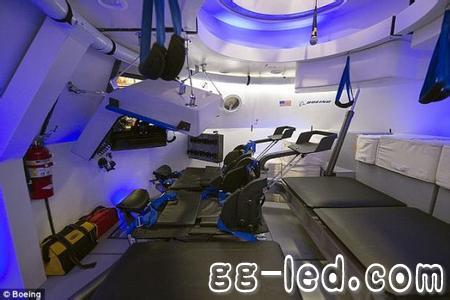Trench Cover,Trench Drain,Drain Cover,Steel Trench Covers Hunan Furui Mechanical and Electrical Equipment Manufacturing Co., Ltd. , https://www.thresher.nl
Since the retiring of the NASA Space Shuttle in July 2011, the United States has been able to transport astronauts and cargo to the International Space Station on the Russian "Alliance" spacecraft. However, the cost of the "Union" spacecraft is very high, and each seat has to pay $50 million. At the same time, the United States is pushing commercial space flights and encouraging commercial space flight companies to develop manned spacecraft. 
In 2010, Boeing and Vegas-based Bigelow Aerospace received $18 million in research and development funding from NASA's Commercial Space Transportation System Development Program, which is responsible for a capsule that can carry seven passengers. Initial research and development and testing work. The advent of the CST-100 spacecraft will reduce the dependence of the United States and its allies on the Russian space transportation system to a certain extent, and at the same time lay the technical foundation for the development of more advanced manned spacecraft.
The CST-100 spacecraft can fly short distances of 100 kilometers above the surface of the Earth. Its shape is similar to that of the Apollo spacecraft used for lunar exploration in the 1960s and 1970s, but it is larger than the Apollo and slightly smaller than the Orion spacecraft. The interior of the spacecraft is modern and the design is very simple. "In this spaceship you can't find the 1100 or 1600 buttons that were previously unmovable," said former American astronaut Chris Philguson, head of Boeing's manned and mission control division. The large windows of the spacecraft allow passengers to enjoy a better view; the seats are made of special materials and are ultra-light, helping to control the weight of the spacecraft when it is landing.
The CST-100 spacecraft can stand in the orbit of the space station for seven months and can be protected by an ablative heat shield when returning to land. The spacecraft can fall on the land in the buffer of the safety air cushion. After replacing the heat shield, the new spacecraft can sail again, and each spacecraft can fly about 10 times.
Currently, including Boeing, two companies have obtained funds from NASA to develop manned spacecraft. The first company is Space Exploration Technology (SpaceX), and its "Dragon" cargo spacecraft has successfully docked with the International Space Station three times. It is reported that the manned spacecraft developed by Space Exploration Technology will be in the phase of the moon and can carry seven people. The next year, people can be sent to space. Another Sierra Nevada company (hereinafter referred to as SNC) is developing a winged spacecraft "dream catcher" (above), which can carry seven people and will also perform tasks in 2017. 
US Boeing CST-100 manned spacecraft uses LED lighting
The Boeing Company of the United States has publicly disclosed the interior design of its CST-100 manned spacecraft for the first time. The spacecraft is modern, surrounded by sky-blue LED lighting, and uses tablet technology. It is expected that the CST-100 will send people in 2017. In space.